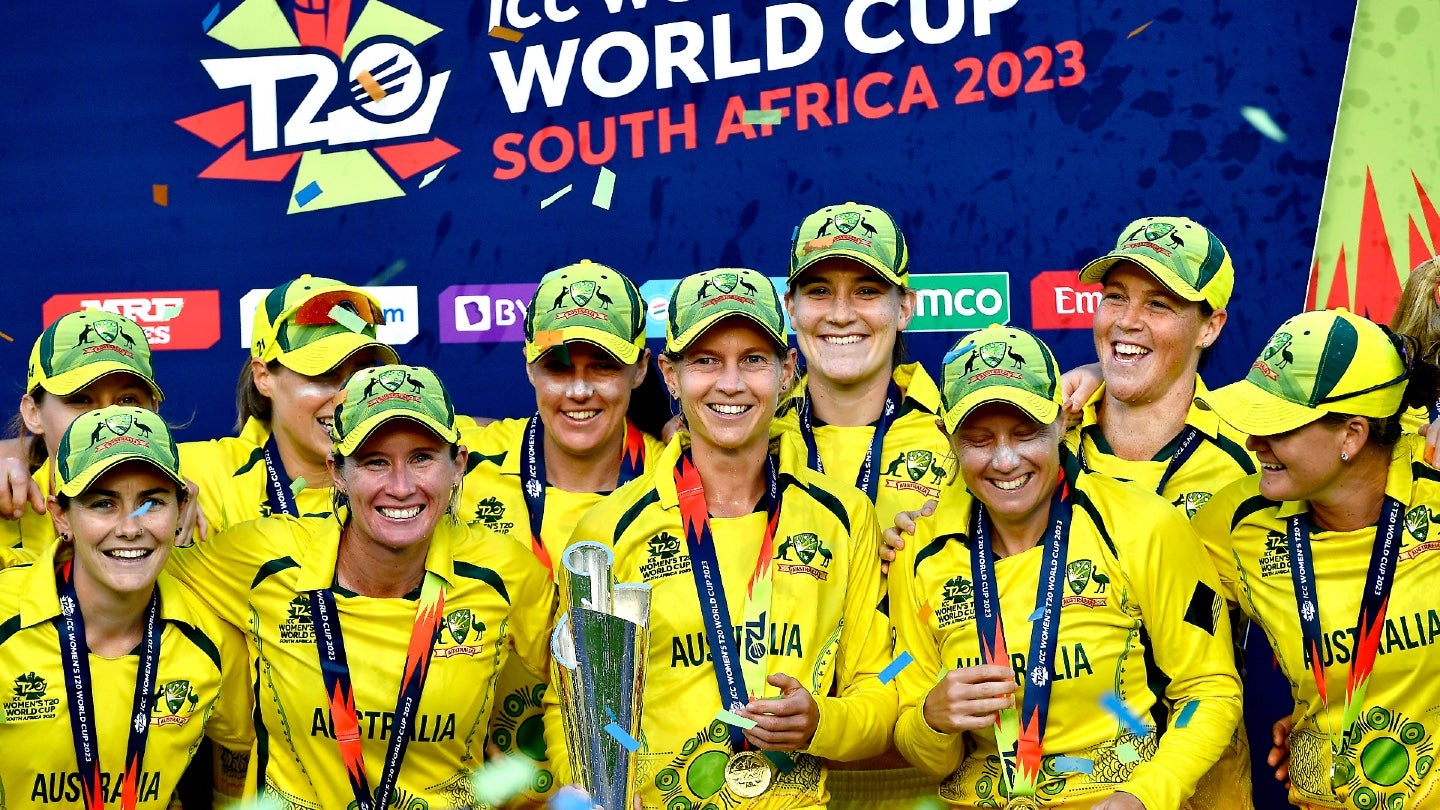
Contracted professional women’s cricketers in Australia will see the total fund their pay comes from increase by AUD53 million ($35.7 million) over the next five years.
That is one of the headline figures that has arisen from the latest memorandum of understanding (MOU) deal signed off by the Cricket Australia (CA) governing body with the Australian Cricketers’ Association (ACA).
The new MOU will see all professional players – men’s and women’s – share a projected AUD634 million over the next five years, a 26% increase on the existing agreement struck in 2017.
Women’s cricketers will be paid from a pot of AUD133 million, up AUD80 million currently.
Top-tier women’s players – the current Twenty20 world champions – contracted directly by CA will earn in excess of AUD800,000 per year by the end of the MOU, while the average annual retainer for a player in the Women’s Big Bash League (WBBL) premier domestic competition will double, to around AUD54,000.
In terms of these players’ payments as a percentage of total projected CA revenue, the new deal sees that level stay at 27.5%, with a further 2.5% set aside for performance-based payments.

US Tariffs are shifting - will you react or anticipate?
Don’t let policy changes catch you off guard. Stay proactive with real-time data and expert analysis.
By GlobalDataNick Hockley, chief executive at Cricket Australia, said: “This MOU represents another major step forward in the rise of women’s cricket, with significant increases in remuneration for the inspirational role models of the world champion Australian women’s team and the WBBL who are driving substantial growth in female participation.
"At the same time, we have recognized the need to ensure that the [men's] BBL remains highly competitive in a changing global cricket landscape and we’re confident this agreement will help maintain its place at the heart of the Australian summer."
CA has said the increases detailed above will make Australian women’s cricketers the highest-paid women’s athletes in a team sport in that country.
In terms of the men’s game, the player payment pool across all eight BBL sides is rising to AUD3 million, meanwhile, while nationally-contracted men’s players will see their salaries rise 7.5%.
By the 2027-28 season, with men’s national team player salaries rising by 2% every year through the course of the deal, that average will top AUD1 million.
The number of men’s national team contracts up for grabs has also risen, from 20 to 24 each year.
The signing of this new MOU follows the sealing of a new domestic media rights arrangement for CA earlier this year.
In January, CA tied up an AUD1.51 billion broadcast deal through to 2031 with current rightsholders Seven, the commercial network, and pay-television operator Foxtel.
The AUD1.51 billion price tag represents an increase of 10.5% per year on the current deal, which sees the broadcasters pay AUD1.2 billion to hold the rights from 2018 to the end of 2023.
However, part of the deal will see the BBL reduced in size, from 61 games per season to 43 from next year onwards.
In terms of the negotiations between CA and the ACA, meanwhile, Hockey praised the “constructive spirit of ownership” in which the talks were carried out.
This is in contrast to the 2017 negotiations when CA was forced to back down over an attempt to end the revenue-sharing model with players.
The impasse six years ago was only resolved after multiple high-profile men’s national team players threatened to strike.
Image: Gallo Images/Getty Images



